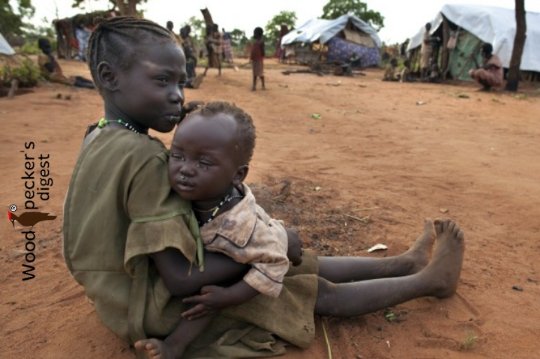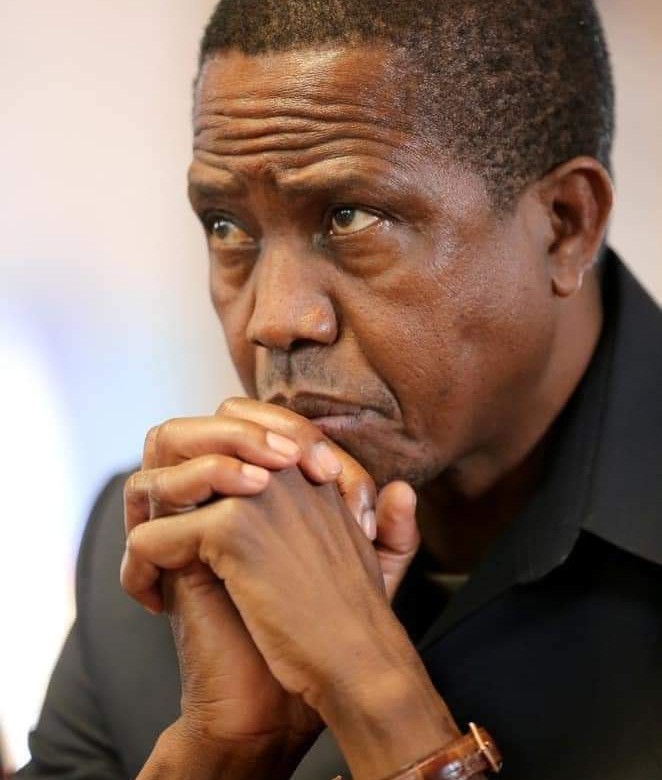
The solution to the poverty in Africa will require a comprehensive and collaborative approach that should take into account the unique circumstances and needs of the African continent.
Lusaka, May 31 [Awabe] – Many African countries had the same GDP as Asian countries in the 1970s, after being devastated by wars and exploited by colonialists. However, over the next 30-40 years, Asia developed vigorously, while Africa was left far behind.
Today, many African countries, especially those in the sub-Saharan region, remain at the bottom of the poverty line. Understanding the main reasons behind this deadlock is crucial to addressing the challenges facing the African continent.
◾Natural Resources: Africa is considered rich or extremely rich when it comes to natural resources, accounting for more than 30 percent of the world’s mineral resources, including gold, diamonds, oil, and gemstones. For example, Tanzania is known for gold, Congo is known for copper, Namibia is known for uranium, and Botswana is known for diamonds. Yet, nearly 50% of its population, especially those in the sub-Saharan region, live below the poverty line.
Also Read: Emerald can propel Zambia to first world status in a decade!
…under capable political leadership! To put it into context, high grade emerald can cost between $4K and $40K per gram or roughly $4M to $40M per Kg. Zambia produces between 2 tonnes and 3 tonnes of per year.
◾Agriculture: One of the key reasons for Africa’s inability to catch up with the “Green Revolution” experienced by Asian countries is the critical challenges it faces in the agricultural sector. Unlike Asia, which was able to ensure food security through investment in agricultural development, Africa’s agriculture is hampered by its location near the equator, resulting in different land, climate, and weather conditions, as well as drought, floods, and a lack of farming experience and mindset. This has led to low productivity, despite the continent’s rich soil and ideal weather conditions.
Additionally, the small-scale farming mindset in small households has threatened the cultivation ability, further contributing to low productivity. In contrast, Asian countries have been able to utilize labour and capital surplus from the agricultural sector to invest in industrial and service sectors, which have become the backbone of their economies.
◾Corruption: Corruption, abuse of power, and the inefficiency of competent authorities have led to ineffective resource management in many African countries. Most of the revenues from the exploitation of resources fall into the hands of political elites, and the national income is not properly distributed to the lower classes. The trickle-down process is slow, and in some cases, it does not even happen.
Also Read: Oswald Diangamo too close to President Hichilema to face justice, set free!
“With Oswald Diangamo in active communication with State House Police Commissioner, Fanwell Siandenge, at the time of his arrest, the entire State House was a crime scene.”
In contrast, Nordic countries, which were once dependent on agriculture and the poor, were able to effectively manage their resources, ensure transparency and accountability, and use revenue effectively to support social development through taxation and social welfare programs.
◾External Factors: External factors, such as the structural adjustment programs proposed by the World Bank and IMF, have also contributed to Africa’s struggles. These programs, which aimed to invest in socio-economic development on the condition of designing a market economy and building democracy, have been largely ineffective. The privatization of national companies with capital flooded from Western countries has resulted in the bankruptcy of local businesses, rampant unemployment, and a shortage of output.
Moreover, these programs employed a top-down approach rather than a bottom-up approach that seeks solutions from the actual needs of the people. Consequently, these programs quickly failed, further exacerbating the challenges facing African countries.
Additionally, the racial diversity in Africa, with its multiple tribes, makes it more difficult to implement policies and development programs effectively. In contrast, countries with more homogeneous populations have found it easier to design and implement centralized programs to address their development needs.
Also Read: Challenging the Western Narrative of Democracy!
Dr. Fred M’membe talks about embracing diverse paths to democracy, rejecting imperialist arrogance and promoting mutual respect!
◾In conclusion, the reasons behind Africa’s “rich” yet “poor” status are multifaceted, ranging from the underutilization of natural resources and challenges in the agricultural sector to corruption, ineffective resource management, and the influence of external factors. Addressing these complex issues will require a comprehensive and collaborative approach that takes into account the unique circumstances and needs of the African continent.
About Our Advocacy: Woodpecker’s Digest is an online portal for news analyses and commentaries on topical issues of national interest and for articles on personal development and health! Journalism is a great tool for progressive social change!
©2024 Woodpecker’s Digest.
Putting news into perspective







